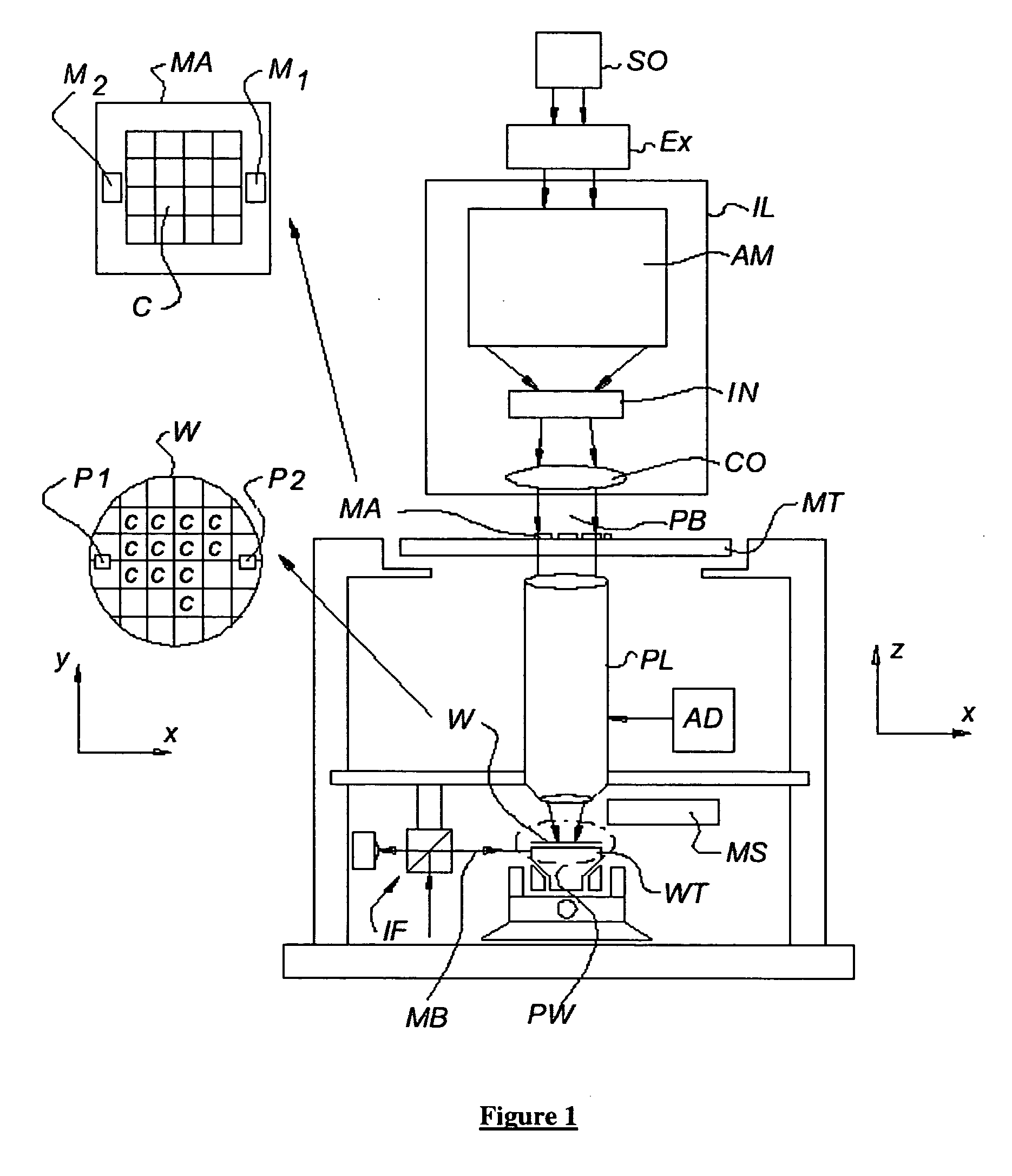Lithographic projection apparatus and device manufacturing method using such lithographic projection apparatus
a technology of lithographic projection and manufacturing method, which is applied in the direction of optics, photography processes, instruments, etc., can solve the problems of inability to use the apparatus for lot production, and insufficient lens heating correction model
- Summary
- Abstract
- Description
- Claims
- Application Information
AI Technical Summary
Benefits of technology
Problems solved by technology
Method used
Image
Examples
Embodiment Construction
[0055]FIG. 1 schematically depicts lithographic projection apparatus including at least one marker structure in accordance with an embodiment of the invention. The apparatus includes:
[0056] an illumination system IL for providing a projection beam PB of radiation (e.g. UV or EUV radiation). In this particular case, the radiation system also comprises a radiation source SO;
[0057] a first support structure MT (e.g. a mask table) for supporting a patterning device, MA (e.g. a mask) and connected to first positioning actuator (not shown) for accurately positioning the patterning device with respect to item PL;
[0058] a second support structure WT (e.g. a wafer table) for holding a substrate, W (e.g. a resist-coated silicon wafer) and connected to second positioning actuator PW for accurately positioning the substrate with respect to item PL; and
[0059] a projection system PL (e.g. a reflective projection lens) for imaging a pattern imported to the projection beam PB by patterning devi...
PUM
 Login to View More
Login to View More Abstract
Description
Claims
Application Information
 Login to View More
Login to View More - R&D
- Intellectual Property
- Life Sciences
- Materials
- Tech Scout
- Unparalleled Data Quality
- Higher Quality Content
- 60% Fewer Hallucinations
Browse by: Latest US Patents, China's latest patents, Technical Efficacy Thesaurus, Application Domain, Technology Topic, Popular Technical Reports.
© 2025 PatSnap. All rights reserved.Legal|Privacy policy|Modern Slavery Act Transparency Statement|Sitemap|About US| Contact US: help@patsnap.com



